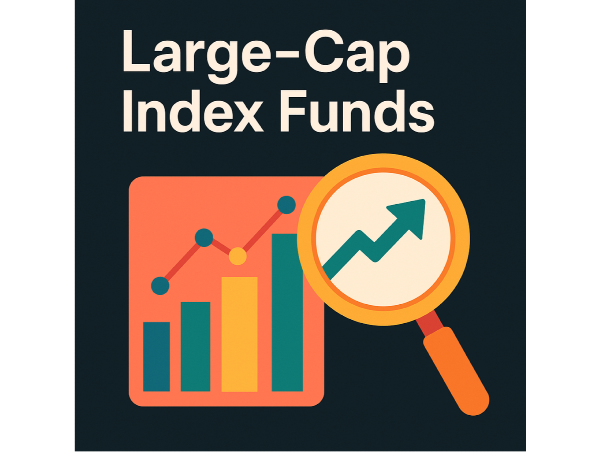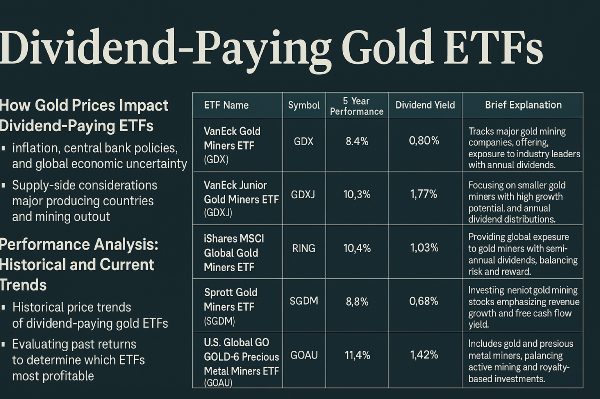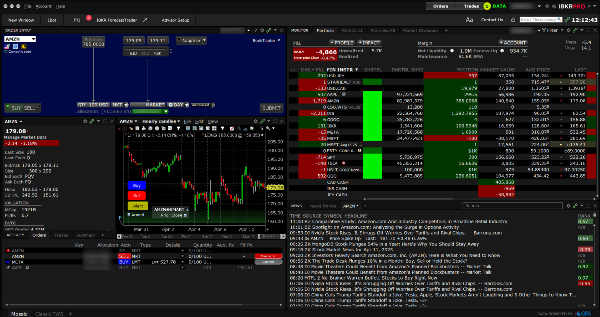Introduction
Large-cap index funds provide investors with a straightforward way to gain exposure to established companies with strong market influence. These funds track benchmark indices such as the S&P 500, offering diversification and lower expense ratios compared to actively managed funds. Compared to actively managed strategies, large-cap index funds follow a passive approach, aiming to match market performance rather than outperform it. [This makes them an attractive option for investors seeking long-term stability with minimal intervention] (https://www.investopedia.com/terms/l/large-cap.asp).
Understanding Large-Cap Index Funds
Large-cap stocks refer to companies with a market capitalization of $10 billion or more. These firms are typically well-established, financially stable, and industry leaders with strong market influence, making them a preferred choice for those seeking steady returns. Many of these companies also pay dividends. Index funds track market performance by replicating the composition of benchmark indices.
These funds hold a diversified portfolio of stocks that mirror the index they follow. By maintaining a passive investment strategy, index funds aim to match the returns of their respective benchmarks rather than outperform them. This approach minimizes management fees and reduces the risks associated with active stock selection. The most commonly tracked indices for large-cap stocks include the S&P 500 and the Russell 1000.
Benefits of Large-Cap Index Funds
Large-cap index funds provide diversification, reducing risk by spreading investments across multiple companies within a benchmark index. This approach minimizes exposure to individual stock volatility, ensuring a more stable portfolio. Diversification helps to mitigate sector-specific risks, making large-cap index funds a reliable choice for long-term investors. One of the key advantages of large-cap index funds is their low expense ratios compared to actively managed funds. Since index funds follow a passive investment strategy, they require less frequent trading and lower management fees.
Actively managed funds, on the other hand, involve regular trading and monitoring. Historically, large-cap index funds have demonstrated consistent performance and long-term growth potential. Large-cap stocks tend to be more resilient during economic downturns while still capturing market growth. Investors looking for reliable returns often turn to index funds as a foundation for their long-term financial strategy.
Drawbacks and Limitations
Large-cap index funds lack flexibility in stock selection, as they strictly follow the composition of benchmark indices unlike actively managed funds. This passive approach means investors cannot capitalize on emerging opportunities or avoid underperforming stocks within the index. This limits the ability to adapt to changing economic trends. Another drawback is the potential for underperformance in certain market conditions, such as potential lag during periods of rapid growth or sector-specific booms. For example, during bull markets driven by innovation or small-cap momentum, large-cap index funds may not capture the highest returns. Also, they are often more exposed to macroeconomic risks.
Large-cap index funds also provide limited exposure to small-cap or high-growth stocks, which can be a disadvantage for investors seeking aggressive portfolio expansion. Small-cap stocks historically offer higher growth potential. This exclusion means investors relying solely on large-cap index funds may miss out on innovative opportunities.
Comparing Index Funds to Actively Managed Funds
Index funds and actively managed funds differ significantly in their investment strategies and approach. Index funds follow a passive strategy, aiming to replicate the performance of a benchmark index such as the S&P 500. They do not involve frequent trading or stock selection, making them a cost-effective option for investors seeking market exposure. Actively managed funds, on the other hand, rely on portfolio managers to select stocks and adjust allocations based on market conditions.
Cost comparison is a crucial factor when evaluating index funds versus actively managed funds- with expense ratios of index funds, often ranging from 0.03% to 0.25%, while the fees of actively managed funds are higher, averaging 0.75% to 1.5%. Over time, this makes index funds a more cost-efficient choice for long-term investors. Performance trends and historical returns show that index funds often outperform actively managed funds over extended periods. Investors seeking reliable long-term growth often prefer index funds, as they provide market-wide exposure without the unpredictability of active management.
Market Trends and Future Outlook
Current trends in large-cap equity investing indicate a shift toward broader market participation beyond the dominance of mega-cap stocks. With technology in the lead, financials, healthcare, and industrials offer strong opportunities. Artificial intelligence remains a key theme, influencing stock selection and portfolio strategies. Additionally, policy changes, including tariff adjustments and deregulation, are shaping investor sentiment and market positioning. The economic cycles play a crucial role in determining large-cap index fund performance. During expansion phases, large-cap stocks tend to benefit from increased corporate earnings and investor confidence.
Conversely, in contraction periods, these stocks may experience volatility due to macroeconomic pressures such as rising interest rates and inflation. Historically, large-cap index funds have provided stability during downturns, as they include companies with strong financial fundamentals and diversified revenue streams. Predictions suggest continued interest in large-cap index funds as a core component of diversified portfolios. Analysts anticipate a shift toward quality investments, favoring companies with strong balance sheets and consistent earnings growth.
Tax Efficiency and Investment Strategies
Since index funds track benchmark indices rather than frequently buying and selling stocks, they generate fewer taxable events. This results in lower capital gains distributions, reducing the tax burden on investors. Additionally, exchange-traded funds (ETFs) based on index strategies provide further tax efficiency. Investors can hold large-cap index funds in tax-deferred accounts such as IRAs or 401(k)s to minimize immediate tax liabilities. Tax-loss harvesting and selecting funds with lower dividend yields are other effective strategies.
Considerations for long-term portfolio allocation involve balancing risk and return while maintaining tax efficiency. Investors should diversify across asset classes, incorporating large-cap index funds alongside bonds and alternative investments to optimize stability. Strategic asset allocation and regular rebalancing ensure that the portfolios align with financial goals and market conditions.
Suitability for Different Investors
Large-cap index funds benefit individuals who prefer passive investing, as they track benchmark indices like the S&P 500, providing broad market exposure. High-net-worth investors, retirement savers, and those looking for cost-effective diversification often favor large-cap index funds due to their historical performance and lower expense ratios compared to actively managed funds. Risk tolerance plays a crucial role, as conservative investors who prioritize stability and predictable returns may find these funds appealing.
Conversely, investors with higher risk tolerance may seek additional exposure to growth-oriented sectors or alternative asset classes to complement their index fund holdings. Integrating large-cap index funds into a diversified portfolio involves balancing exposure across different asset classes. Investors can pair these funds with bond index funds to reduce overall portfolio risk or add sector-specific ETFs for targeted global growth opportunities. A well-structured portfolio ensures stability while capturing market-wide growth potential.
Conclusion
Large-cap index funds provide investors with a reliable, cost-effective way to gain broad market exposure while minimizing management fees and tax liabilities. These funds offer diversification, stability, and long-term growth potential, making them an attractive option for those seeking passive investment strategies. While they may lack flexibility in stock selection, their historical performance and low expense ratios continue to make them a core component of many portfolios. By integrating large-cap index funds alongside other asset classes, investors can achieve balanced, efficient portfolio growth that aligns with their financial goals.




























Introduction
Large-cap index funds provide investors with a straightforward way to gain exposure to established companies with strong market influence. These funds track benchmark indices such as the S&P 500, offering diversification and lower expense ratios compared to actively managed funds. Compared to actively managed strategies, large-cap index funds follow a passive approach, aiming to match market performance rather than outperform it. [This makes them an attractive option for investors seeking long-term stability with minimal intervention] (https://www.investopedia.com/terms/l/large-cap.asp).
Understanding Large-Cap Index Funds
Large-cap stocks refer to companies with a market capitalization of $10 billion or more. These firms are typically well-established, financially stable, and industry leaders with strong market influence, making them a preferred choice for those seeking steady returns. Many of these companies also pay dividends. Index funds track market performance by replicating the composition of benchmark indices.
These funds hold a diversified portfolio of stocks that mirror the index they follow. By maintaining a passive investment strategy, index funds aim to match the returns of their respective benchmarks rather than outperform them. This approach minimizes management fees and reduces the risks associated with active stock selection. The most commonly tracked indices for large-cap stocks include the S&P 500 and the Russell 1000.
Benefits of Large-Cap Index Funds
Large-cap index funds provide diversification, reducing risk by spreading investments across multiple companies within a benchmark index. This approach minimizes exposure to individual stock volatility, ensuring a more stable portfolio. Diversification helps to mitigate sector-specific risks, making large-cap index funds a reliable choice for long-term investors. One of the key advantages of large-cap index funds is their low expense ratios compared to actively managed funds. Since index funds follow a passive investment strategy, they require less frequent trading and lower management fees.
Actively managed funds, on the other hand, involve regular trading and monitoring. Historically, large-cap index funds have demonstrated consistent performance and long-term growth potential. Large-cap stocks tend to be more resilient during economic downturns while still capturing market growth. Investors looking for reliable returns often turn to index funds as a foundation for their long-term financial strategy.
Drawbacks and Limitations
Large-cap index funds lack flexibility in stock selection, as they strictly follow the composition of benchmark indices unlike actively managed funds. This passive approach means investors cannot capitalize on emerging opportunities or avoid underperforming stocks within the index. This limits the ability to adapt to changing economic trends. Another drawback is the potential for underperformance in certain market conditions, such as potential lag during periods of rapid growth or sector-specific booms. For example, during bull markets driven by innovation or small-cap momentum, large-cap index funds may not capture the highest returns. Also, they are often more exposed to macroeconomic risks.
Large-cap index funds also provide limited exposure to small-cap or high-growth stocks, which can be a disadvantage for investors seeking aggressive portfolio expansion. Small-cap stocks historically offer higher growth potential. This exclusion means investors relying solely on large-cap index funds may miss out on innovative opportunities.
Comparing Index Funds to Actively Managed Funds
Index funds and actively managed funds differ significantly in their investment strategies and approach. Index funds follow a passive strategy, aiming to replicate the performance of a benchmark index such as the S&P 500. They do not involve frequent trading or stock selection, making them a cost-effective option for investors seeking market exposure. Actively managed funds, on the other hand, rely on portfolio managers to select stocks and adjust allocations based on market conditions.
Cost comparison is a crucial factor when evaluating index funds versus actively managed funds- with expense ratios of index funds, often ranging from 0.03% to 0.25%, while the fees of actively managed funds are higher, averaging 0.75% to 1.5%. Over time, this makes index funds a more cost-efficient choice for long-term investors. Performance trends and historical returns show that index funds often outperform actively managed funds over extended periods. Investors seeking reliable long-term growth often prefer index funds, as they provide market-wide exposure without the unpredictability of active management.
Market Trends and Future Outlook
Current trends in large-cap equity investing indicate a shift toward broader market participation beyond the dominance of mega-cap stocks. With technology in the lead, financials, healthcare, and industrials offer strong opportunities. Artificial intelligence remains a key theme, influencing stock selection and portfolio strategies. Additionally, policy changes, including tariff adjustments and deregulation, are shaping investor sentiment and market positioning. The economic cycles play a crucial role in determining large-cap index fund performance. During expansion phases, large-cap stocks tend to benefit from increased corporate earnings and investor confidence.
Conversely, in contraction periods, these stocks may experience volatility due to macroeconomic pressures such as rising interest rates and inflation. Historically, large-cap index funds have provided stability during downturns, as they include companies with strong financial fundamentals and diversified revenue streams. Predictions suggest continued interest in large-cap index funds as a core component of diversified portfolios. Analysts anticipate a shift toward quality investments, favoring companies with strong balance sheets and consistent earnings growth.
Tax Efficiency and Investment Strategies
Since index funds track benchmark indices rather than frequently buying and selling stocks, they generate fewer taxable events. This results in lower capital gains distributions, reducing the tax burden on investors. Additionally, exchange-traded funds (ETFs) based on index strategies provide further tax efficiency. Investors can hold large-cap index funds in tax-deferred accounts such as IRAs or 401(k)s to minimize immediate tax liabilities. Tax-loss harvesting and selecting funds with lower dividend yields are other effective strategies.
Considerations for long-term portfolio allocation involve balancing risk and return while maintaining tax efficiency. Investors should diversify across asset classes, incorporating large-cap index funds alongside bonds and alternative investments to optimize stability. Strategic asset allocation and regular rebalancing ensure that the portfolios align with financial goals and market conditions.
Suitability for Different Investors
Large-cap index funds benefit individuals who prefer passive investing, as they track benchmark indices like the S&P 500, providing broad market exposure. High-net-worth investors, retirement savers, and those looking for cost-effective diversification often favor large-cap index funds due to their historical performance and lower expense ratios compared to actively managed funds. Risk tolerance plays a crucial role, as conservative investors who prioritize stability and predictable returns may find these funds appealing.
Conversely, investors with higher risk tolerance may seek additional exposure to growth-oriented sectors or alternative asset classes to complement their index fund holdings. Integrating large-cap index funds into a diversified portfolio involves balancing exposure across different asset classes. Investors can pair these funds with bond index funds to reduce overall portfolio risk or add sector-specific ETFs for targeted global growth opportunities. A well-structured portfolio ensures stability while capturing market-wide growth potential.
Conclusion
Large-cap index funds provide investors with a reliable, cost-effective way to gain broad market exposure while minimizing management fees and tax liabilities. These funds offer diversification, stability, and long-term growth potential, making them an attractive option for those seeking passive investment strategies. While they may lack flexibility in stock selection, their historical performance and low expense ratios continue to make them a core component of many portfolios. By integrating large-cap index funds alongside other asset classes, investors can achieve balanced, efficient portfolio growth that aligns with their financial goals.